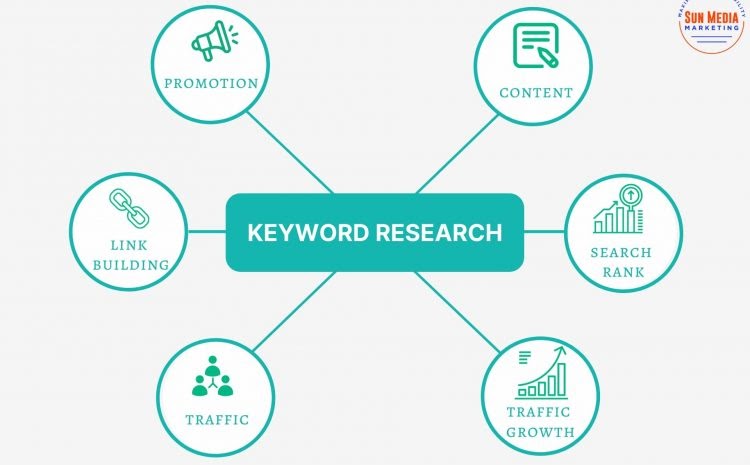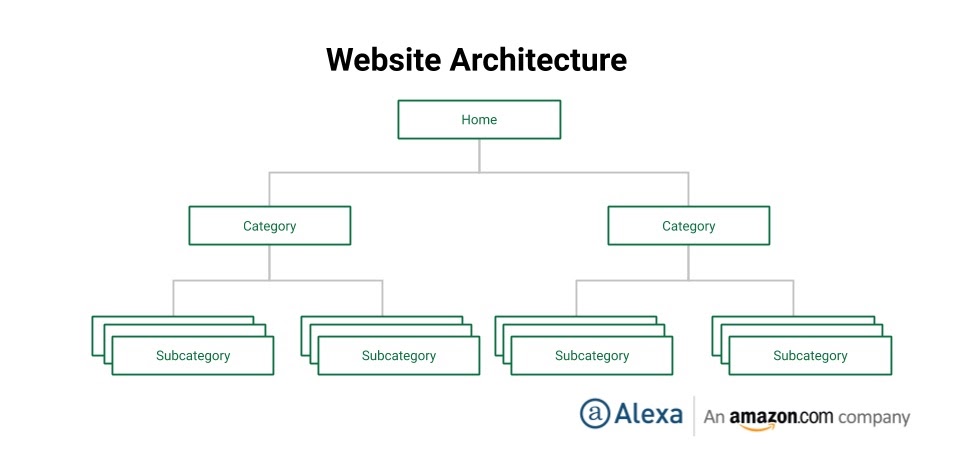
Table of Contents
- What is SEO?
- Key Elements of SEO
- What Are SEO Strategies?
- SEO Marketing Basics
- Everything You Need To Know About SEO Right Now
- 5 Key Takeaways
- Conclusion
- FAQs
Do you want to learn what SEO is and how it works? We have the answers you are looking for. With the popularity of digital media marketing and content writing for businesses skyrocketing, everyone wants to know what SEO is and how it works. While it’s a small part of online marketing, it is significant. With every passing day, it’s becoming more critical to understand what SEO is and get a good feel of utilizing it. So, we have compiled a guide where you can find everything you need to know about SEO.

What is SEO?
Simply put, SEO stands for search engine optimization. It is the process of taking steps that will help a website or a piece of content rank higher in the search results on a search engine like Google.
Unlike paid advertisements, which bring paid traffic towards your website, SEO means an “organic” ranking is involved, meaning that your ranking in that space is not because you paid for it. In simpler terms, SEO is the process of taking a piece of content and optimizing it to make it more appealing for search engines like Google. Google will pick it up and rank it towards the top of the page when a reader searches for a related keyword.
For example, if someone searches for “search engine optimization,” Google will show various results about what SEO is, how to use it, the best methods to use it, and so on. Having written this article, our key objective is to be the article you pick from a search engine to get your information. The best way to do that is to be one of the first few articles you find on the search engine results page (SERP). Otherwise, you are more likely to choose another article due to the sheer convenience of it being higher up on the page.
If it sounds competitive and challenging, that’s because it is. Digital media marketing is a challenging field where everything comes down to a fight for clicks. The more clicks you get, the more attention you get, the more likely you are to grow. Being towards the top of the page makes a world of difference.
To better understand what SEO is and how to use it, you need to understand the concept of SEO as a whole, which is the key objective of this article.
Key Elements of SEO
There are two core elements to SEO, which are as follows:
1. On-page SEO
What is ‘on-page SEO,’ you ask? Also known as ‘on-site SEO,’ this is a practice of optimizing your web page content to improve your rankings in the search engine. This includes,
- The title tag is 70 words or less and must include the keyword.
- A meta description is a short description of what your content is about and must use keywords.
- Sub-headings make it easier for the readers to consume the content.
- Internal links or hyperlinks can help connect readers to another piece of content on your site.
- Image name or alt text can be used when adding images to your website. You can put keywords in these as well.
Keyword research and utilization of those keywords to produce keyword-rich content is the most important part of on-page SEO. You also need to focus on creating well-written, keyword-rich content regularly.
2. Off-page SEO
What is ‘off-page SEO?’ Also known as ‘off-site SEO,’ this is the practice of optimization that happens outside of your website to impact your rankings within the search engine results. This includes earning backlinks from other content creators. This process primarily includes,
- Backlinks that link one website to the other
- Trust is becoming a key ingredient in this process pretty fast, as Google verifies whether the traffic you are getting is genuine or not.
- Social signals such as comments, likes, and dislikes also play a role in boosting your SEO.
In a nutshell, off-page SEO is about building relations with other organizations in the field while also making sure your content is well-written enough for people to want to share. It’s similar to PR and requires a significant amount of time and dedication, but it’s well worth the effort.
What Are SEO Strategies?

SEO is a process that can be utilized in a versatile manner. Based on what kind of outcome you wish to achieve, you can opt for one of two SEO strategies to gain the desired results you are looking for. These strategies include,
1. Black hat SEO
We start with the strategy that you DON’T want to use. Why? Let’s see below.
You can reach your goals rather quickly by using black hat SEO if you wish to. In this method, people favor getting attention as soon as possible without much regard for the long-term consequences. Using tactics like keywords stuffing and invisible text, black hat SEO helps you quickly rise up in the ranks.
However, it is a reasonable short-term solution. Google could blacklist or penalize your site if it so chooses, after which you will never rank. Moreover, it would also mean that the traction you gain using this tactic is not sustainable because that is not how SEO works. SEO can bring traffic to your page, but your content must be good enough to keep them coming back for more.
The organizations that use this tactic are more than willing to bend the rules to gain quick traction. In the end, however, when you use this strategy, it ends up making your content look a lot like spam.
The methods companies use in black hat SEO are as follows:
- The same content is duplicated and posted on the site to get more traction. This includes the double use of keywords.
- Keyword stuffing is a strategy where you put a bunch of keywords at the end of the article and convert it to the color of the background to blend it in and make it invisible.
- Cloaking and redirecting is when companies buy a bunch of keyword-rich domains and then repeatedly urge traffic to that particular page.
- Poor linking practices include buying links online, which is not a sustainable way to incorporate backlinks.
2. White hat SEO
This is the SEO strategy you WANT to use for long-term results.
Unlike black hat, white hat SEO can generate interest and take your website up the ranks in a sustainable and long-term manner. This type of approach requires you to focus on the human element. When using white hat SEO, you give your website a clear SEO definition that makes it easier to find and view. White hat SEO aims to follow the rules diligently and produce content worthy of being ranked towards the top of the search results page.
3. Grey Hat SEO
Seeing as Google doesn’t have clear-cut instructions about what can and cannot be penalized for SEO, some prefer drawing their lines. Grey hat SEO falls between the aforementioned two but mostly takes elements from white hat SEO.

SEO Marketing Basics
Do you ever question what SEO marketing is? This section lists down the basics of SEO marketing to help you understand it.
1. Content
Let’s start with the most straightforward element. You have probably heard all about the importance of content. You must have been told repeatedly that ‘content is king,’ which is correct. The content you put out on your page decides whether or not the people reading it like you. You could have the best SEO strategy and a million keywords, but unless the content is engaging enough for the reader, it will have all been for naught.
The importance of the freshness and quality of your content is the first thing you are taught. So here we will provide you with a couple of ways to improve your content:
- Know your customer: You need to know what type of database you are writing for. Have a rough idea of your target audience, and then write the content.
- Cater to the user: The content you are creating is meant for the user, so try your best to ensure it answers the question they are asking.
- Divide for ease of consumption: Place the information in different paragraphs, lists, or sub-headings to make it easier to consume.
- Make it actionable: Ensure that you provide ample information for the reader to finish reading and have all the information necessary to start working.
2. Keyword research and selection

Keywords are an integral part of SEO. Keywords are words and phrases that people type into search engines to find what they’re looking for. On the other hand, keyword research is research to find out which keywords work for a specific topic. When you use these keywords in your blog post, your post is more likely to get ranked, which is precisely what SEO is all about. Moreover, keyword research also helps you create relevant content as it tells you exactly what people want.
When it comes to keywords and their selection, you need to pin down the ‘search intent,’ which is essentially the intent that the person searching has behind whatever he types into the search bar. It’s hard to pinpoint and depends mainly on what your target demographic is looking for. But once you can figure out what people are looking for in your genre, you will produce more lucrative content.
Here are a few tips to help with the keyword selection process,
- Use tools like SEMrush and Moz to get an insight into what keywords to use.
- Learn the intent behind the search being made. It’s not an easy process, but you will understand it with time.
- Understand the semantics, and try to remember that once you figure out the search intent, you can use the keywords to answer it.
- Keep an eye on the competition because you can gauge what you’re doing right or wrong based on what they are doing. Comparing work always helps you get a better idea.
3. HTML
Don’t worry; you don’t need to learn to code! When talking about HTML as part of SEO, people usually start to worry about the coding element, which is far from the main focus of the discussion. The idea is that you scatter the keywords into the HTML for your page to make sure that Google picks it up. Put it in the title tag, meta description, subheadings, alt text, and URL slug. This makes it easier for your post to get ranked by Google.
A few tips to help you improve the HTML of your page are,
- Use tools like Ahrefs for guidance as they will always have outlines you can follow.
- Take inspiration from your competition but with respect. Don’t steal; just observe how they utilize HTML and see if inspiration strikes.
- Never stuff keywords because then the reader won’t care enough about reading it.
- Don’t forget the rest of the headers. H2, H3, and H4 are also important.
4. Site architecture<h3>

Site architecture is a crucial aspect of SEO marketing. Your website doesn’t just have to be visually appealing and aesthetically pleasing; it also needs to be mobile-friendly and encourage interaction. It should be speedy enough not to drive the visitor away due to a long wait or buffering.
Here are a few tips you can use to improve the architecture of your site
- Get a sitemap or use plugins like WordPress if you have a substantial site to get a better layout that works well.
- Fix canonical issues that occur when multiple URLs on your site display duplicate content. You can fix this issue with the help of a Broken Link Checker.
5. Trust
Does it sound cheesy? Well, it is anything but. Trust has slowly but surely become a crucial factor in building the credibility of websites with search engines. Only if you seem like a trustworthy website will Google send traffic your way. Big sites like WordPress and Blogger get more traction as Google trusts them more. You can use tools like TrustRank to see the legitimacy of your website with Google. When considering trust, Google looks at four things:
- An about page
- Privacy policy
- Terms of service
- Contact
If you follow specific protocols, such as if your about page has sufficient information about your site and your privacy policy has all the necessary clauses (ideally drafted by a legal official), you are more likely to gain Google’s trust.
To be trusted, you need to work on your bounce rate, which is the rate of people who leave the site after just looking at the first page. Loading time, content, site design are all factors to be considered. The age of your domain also will lend credibility to your website.
Here are some tips for building more trust,
- Be patient; this process takes time.
- Give users what they want to avoid them from bouncing from your page instantly.
6. Links
You might think that using links is counterproductive to keeping the reader on your site longer. The jury is still out on whether or not it works. However, it can be said that links help out more than you would think in the long run. Based on the quality of the links, the anchor text it is being used with, and the number of links used, your result may vary. But, if used well, they are sure to benefit you.
Here are a few tips for better linking,
- Avoid shortcuts because building links takes time, effort, and energy, which cannot happen in a day’s work. You will have to find niche links yet relevant to your topic.
- Get rid of bad links that might be causing more harm to your website. Links that have become irrelevant or don’t work anymore should be removed from your website using Google’s disavow tool.
- Interlinking is just as important as external linking. Link to other pre-existing articles on your site if it applies to the material you are currently working on.
7. Personal
This one, as the name suggests, is personal. Meaning, based on your particular website, there will be some marketing decisions that you will have to make—these need to be more niche and more personalized. Depending on the product you are marketing and your target audience, your marketing methodology should also change. It will also depend on your country – and even city – of origin. SEOs differ with the country; be mindful of this. The idea is to always cater to your target audience, so you should use the keywords that work better in that particular region.
A few essential tips to improve personal factors concerning your SEO marketing are as follows:
- Know your customer because they could be different from your competition’s customers. Giving your customer what they want is the best way to keep the traffic high; so, you need to know exactly what they want.
- Create content in multiple languages that are spoken fluently in your country. A good chunk of the population must be fluent in these languages, and you need to cater to them as well.
- Keyword research for your country will reap different results.
Everything You Need To Know About SEO Right Now
Google, as a platform, is known to make changes to its algorithm. This algorithm is responsible for ranking the search results and finding them from the vast expanse of the Internet. You must have heard about tweaks that Google makes now and again. These are known as ‘core updates.’ Unless the changes are drastic, you shouldn’t worry much about them and keep focusing on producing well-written, keyword-rich, and ideal content for your target audience. There is no point in playing the system because it will just distract you from your main objective of creating actual content.

Key Takeaways
- SEO is the process of taking steps that will help a website or a piece of content rank higher on Google search results.
- The black hat SEO strategy is penalized by Google and should not be utilized. You should choose the white hat SEO strategy and create content everyone wishes to read.
- When talking about SEO marketing, your content and keywords are crucial to driving traffic towards your website.
- The site’s architecture, along with the trust ranking, will determine the flow of traffic it gets.
- The content you put out needs to cater to your specific target audience without alienating new, incoming visitors.
Conclusion
We told you what SEO is and how SEO works. But, from everything you have learned about SEO thus far, the most important thing you need to remember is that it’s another tool to enhance what you write. It is meant to work to support the content you create and make it more visible to people searching for answers. Because, what is SEO, if not the process of providing the best possible solution to people?
FAQs
Yes, you do. While not necessary, the chances of your website ranking without SEO are not very good.
SEO isn’t an overnight process. Ideally, you should wait for a few months to reap the rewards of using SEO.
The best way to start is by using tools like SEMrush and Moz, which guide you through the process of building an SEO strategy.
Go to Google and search for your site name, for example, ‘site:nameofsite.com.’ If your site is brand new, there is a slight chance that it might not show up.
Using tools like Ahrefs, SEMrush and Moz will be extremely helpful as they provide you with the keywords for the specific content you are looking for.
While you can rank without SEO, it is relatively unlikely. You could be lucky enough for it to happen, but Google’s algorithm usually prefers SEO.
Latest Blogs
Learn how to rank on AI search engines like ChatGPT, Perplexity, and Gemini by optimizing your content for authority, structure, and relevance. Stay ahead in AI-driven search with this strategic guide.
Explore the best healthcare SEO services for your medical practice. Improve online visibility and effectively reach more patients in need of your services.
Discover top social media agencies specializing in banking solutions, enhancing financial services and driving engagement.
Get your hands on the latest news!
Similar Posts

Artificial Intelligence
6 mins read
The Role of AI in Digital Marketing: AI Article Generators Transforming Content Creation

Artificial Intelligence
4 mins read
How AI Content Creator Is Shaping the Future of Digital Content

Digital Marketing
3 mins read